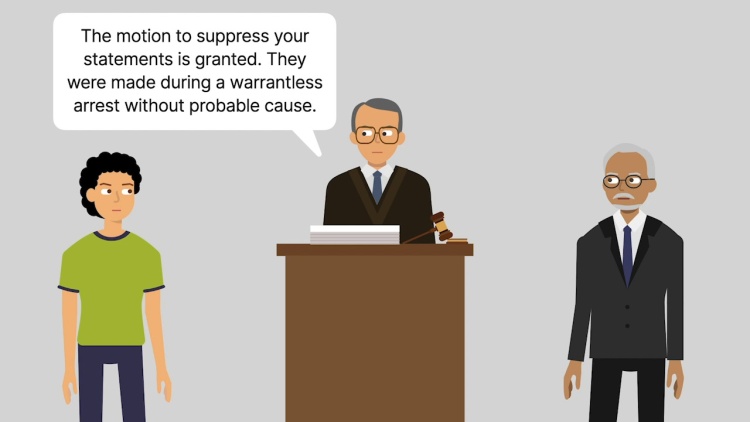James v. Illinois
United States Supreme Court
493 U.S. 307, 110 S. Ct. 648, 107 L. Ed. 2d 676 (1990)

- Written by Sean Carroll, JD
Facts
Darryl James (defendant) was a murder suspect. When the police found James the day after the murder, he was in a beauty parlor getting his hair curled and dyed black. The police took James into custody, and James told the officers that his hair had previously been reddish-brown and straight. He stated that he dyed his hair black “to change his appearance.” At a pretrial hearing, the trial court ruled these statements inadmissible as the fruit of a warrantless arrest that violated James’s Fourth Amendment rights. At trial, eyewitnesses for the prosecution identified James as the shooter, testified that the shooter had reddish hair, and testified that they had seen James with reddish hair prior to the shooting. James did not testify. Jewel Henderson, a family friend, testified in James’s defense. Henderson stated that on the day of the shooting, James’s hair was black. The prosecution sought to impeach Henderson’s testimony with James’s statements to the officers when he was arrested. The trial court admitted James’s statements for impeachment purposes. James was convicted. The Illinois Appellate Court reversed, finding that the exclusionary rule did not allow illegally obtained statements to be used for impeaching a defense witness’s testimony. The Illinois Supreme Court reversed and reinstated James’s conviction, finding that the impeachment exception to the exclusionary rule applied to Henderson’s testimony. The United States Supreme Court granted certiorari.
Rule of Law
Issue
Holding and Reasoning (Brennan, J.)
Dissent (Kennedy, J.)
What to do next…
Here's why 899,000 law students have relied on our case briefs:
- Written by law professors and practitioners, not other law students. 47,000 briefs, keyed to 994 casebooks. Top-notch customer support.
- The right amount of information, includes the facts, issues, rule of law, holding and reasoning, and any concurrences and dissents.
- Access in your classes, works on your mobile and tablet. Massive library of related video lessons and high quality multiple-choice questions.
- Easy to use, uniform format for every case brief. Written in plain English, not in legalese. Our briefs summarize and simplify; they don’t just repeat the court’s language.





